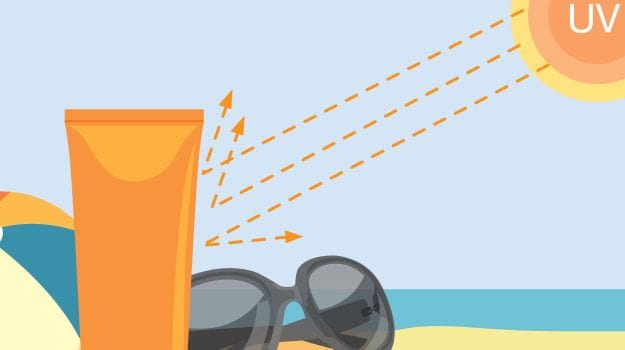
PhotoCredit:istock
Testing, testing!
The 2016 Skin Cancer Foundation Journal
You stand in the drugstore, scanning the product information on 20 or 30 brands of sunscreen. SPF, broad spectrum – it all sounds very official, but how do manufacturers prove their products work to the required standard?
In the latest edition of its annual journal, the Skin Cancer Foundation spells out exactly which tests the Food and Drug Administration requires of sunscreen manufacturers. Here’s the abbreviated version:
Sun protection factor (SPF): This is a gauge of how long the product will protect you from ultraviolet B rays, the short-wavelength rays that cause sunburn and can lead to skin cancer. Lab technicians shine a UV lamp that simulates the sun’s rays on a spot on the backs of at least 10 paid volunteers, recording how long it takes each person’s skin to turn red. Then a specific amount of sunscreen is applied to other areas on the volunteers’ backs. After a 15-minute pause while the product is absorbed, the techs aim the solar simulator at the protected areas. To get an SPF rating of 15, the sunscreen has to enable the average volunteer’s skin to be exposed 15 times longer without getting red than the unprotected spot; for 30, it has to be 30 times longer, and so on.
Broad-spectrum protection: This means the product also guards against long-wave ultraviolet A rays, which can also cause cancer and are the major cause of prematurely aged skin. No human volunteers here: Instead, the techs apply sunscreen to a special material in a lab dish and shine light on it. Then they measure how much of the UV spectrum the material has absorbed and rate how well the sunscreen kept the UVA rays out. The test is repeated to make sure the sunscreen is photo-stable, meaning its ingredients don’t break down in sunlight.
Water resistance: Techs apply sunscreen to the backs of at least 10 volunteers, who then sit in a sort of hot tub – there’s a little turbulence, to make it more like going to the beach – for the number of minutes the product claims to resist water. Then they repeat the SPF test to make sure the sunscreen didn’t wash off.
Beyond the FDA requirements, the Skin Cancer Foundation reviews test results for contact irritancy – an allergic reaction that may occur before you even go out into the sun – and photo-toxicity, a similar reaction when sunscreened skin is exposed to UV light. The lab applies sunscreen and checks volunteers after 24 hours away from the sun, and in a separate test checks them after sun exposure. To get the foundation’s seal of recommendation, a sunscreen must pass both tests on at least 20 volunteers.
(c) 2016, The Washington Post
(This story has not been edited by NDTV staff and is auto-generated from a syndicated feed.)
[“source-ndtv”]
